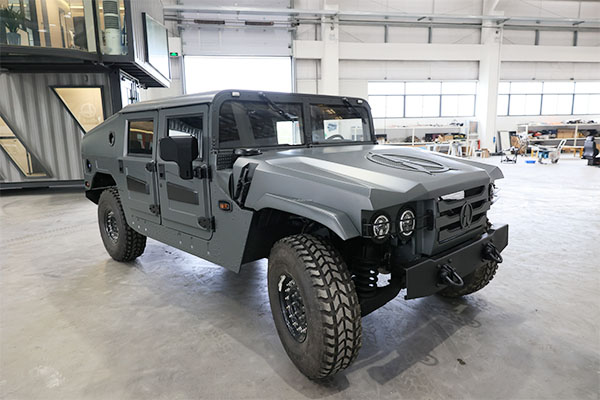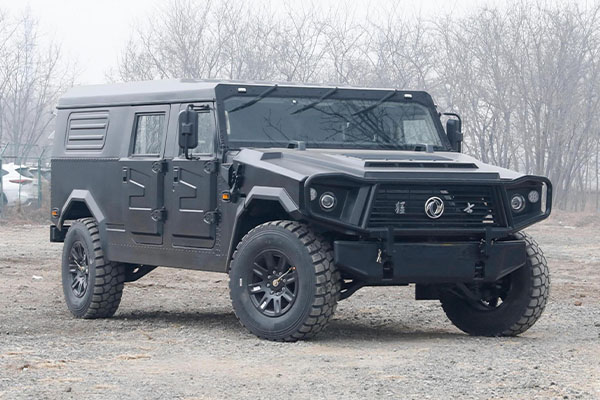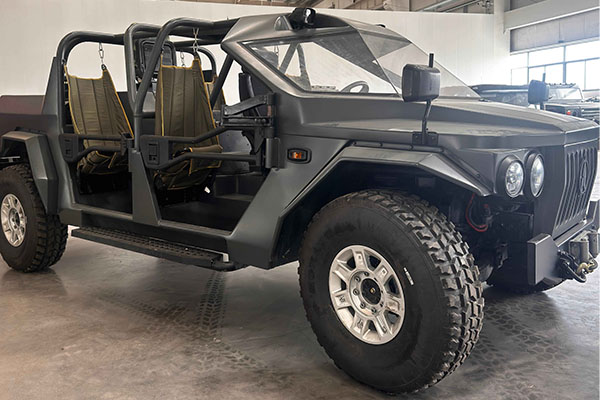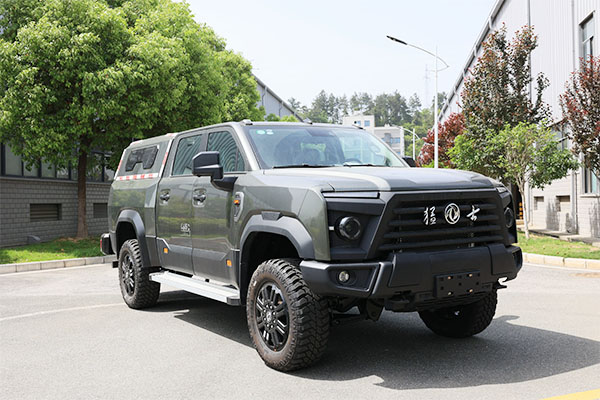How good are the off-road capabilities of special equipment transporters in complex terrain?
Release Time : 2025-09-23
In modern engineering construction, energy development, mining operations, and emergency rescue, transporting large, specialized equipment often faces severe geographical challenges. Rugged mountain roads, muddy forests, soft sand, and steep slopes—this complex terrain places extremely high demands on transport vehicles. With its exceptional off-road performance, special equipment transporters are crucial for ensuring the safe and efficient transfer of heavy equipment.
1. Powerful Powertrain: The Foundation for Conquering Complex Terrain
Special equipment transporters are typically equipped with high-performance diesel engines offering high torque output and a wide power range. This powertrain provides strong traction even at low speeds, making it easy to navigate steep slopes, deep potholes, and soft terrain. Furthermore, the advanced transmission system effectively distributes power to each wheel, ensuring forward momentum even when one wheel slips, effectively preventing the vehicle from getting stuck. A powerful powertrain is the fundamental guarantee for stable operation in complex terrain.
2. Professional Chassis and Suspension Design: Enhanced Maneuverability and Stability
The special equipment transporter's chassis features a specially reinforced design using high-strength steel or alloy materials, providing exceptional torsional rigidity and load-bearing capacity. This effectively protects the vehicle structure and loaded equipment, even on bumpy roads. Equipped with a multi-stage hydraulic suspension or independent suspension system, the vehicle's height can be automatically or manually adjusted based on the terrain, providing improved ground clearance and grip. For example, the chassis can be raised when navigating ravines, or the center of gravity can be lowered for improved stability at high speeds. This flexible suspension system significantly enhances the vehicle's maneuverability and ride smoothness.
3. Customizable Tires and Drive Layout: Adapting to Diverse Ground Conditions
To suit different operating environments, the special equipment transporter can be equipped with a variety of tire types, including ultra-wide, low-pressure tires, deep-tread off-road tires, or tracked running gear. Wide, low-pressure tires significantly reduce ground pressure, preventing the vehicle from sinking in mud or sand. Tracked running gear further improves grip on extremely soft surfaces or on ice and snow. Furthermore, the multi-axle, multi-wheel drive layout not only distributes the vehicle's weight but also provides more driving points, significantly improving the vehicle's grip on slippery and sloping roads.
4. Intelligent Control Systems: Enabling Precise Control and Safety
Modern special equipment transporters are generally integrated with advanced electronic control systems, including electronic stability programs, anti-lock braking systems, hill-start assist, and central tire inflation and deflation systems. The driver can adjust tire pressure in real time to adapt to varying surface conditions. Furthermore, onboard navigation and terrain recognition systems assist in planning optimal routes and avoiding hazardous areas. These intelligent features not only enhance control convenience but also ensure driving safety at critical moments.
In summary, the special equipment transporter's ability to navigate complex terrain with ease is due to its comprehensive combination of powerful power, a sturdy chassis, intelligent control, and customized design. It is more than just a means of transport; it is a mobile engineering platform.
1. Powerful Powertrain: The Foundation for Conquering Complex Terrain
Special equipment transporters are typically equipped with high-performance diesel engines offering high torque output and a wide power range. This powertrain provides strong traction even at low speeds, making it easy to navigate steep slopes, deep potholes, and soft terrain. Furthermore, the advanced transmission system effectively distributes power to each wheel, ensuring forward momentum even when one wheel slips, effectively preventing the vehicle from getting stuck. A powerful powertrain is the fundamental guarantee for stable operation in complex terrain.
2. Professional Chassis and Suspension Design: Enhanced Maneuverability and Stability
The special equipment transporter's chassis features a specially reinforced design using high-strength steel or alloy materials, providing exceptional torsional rigidity and load-bearing capacity. This effectively protects the vehicle structure and loaded equipment, even on bumpy roads. Equipped with a multi-stage hydraulic suspension or independent suspension system, the vehicle's height can be automatically or manually adjusted based on the terrain, providing improved ground clearance and grip. For example, the chassis can be raised when navigating ravines, or the center of gravity can be lowered for improved stability at high speeds. This flexible suspension system significantly enhances the vehicle's maneuverability and ride smoothness.
3. Customizable Tires and Drive Layout: Adapting to Diverse Ground Conditions
To suit different operating environments, the special equipment transporter can be equipped with a variety of tire types, including ultra-wide, low-pressure tires, deep-tread off-road tires, or tracked running gear. Wide, low-pressure tires significantly reduce ground pressure, preventing the vehicle from sinking in mud or sand. Tracked running gear further improves grip on extremely soft surfaces or on ice and snow. Furthermore, the multi-axle, multi-wheel drive layout not only distributes the vehicle's weight but also provides more driving points, significantly improving the vehicle's grip on slippery and sloping roads.
4. Intelligent Control Systems: Enabling Precise Control and Safety
Modern special equipment transporters are generally integrated with advanced electronic control systems, including electronic stability programs, anti-lock braking systems, hill-start assist, and central tire inflation and deflation systems. The driver can adjust tire pressure in real time to adapt to varying surface conditions. Furthermore, onboard navigation and terrain recognition systems assist in planning optimal routes and avoiding hazardous areas. These intelligent features not only enhance control convenience but also ensure driving safety at critical moments.
In summary, the special equipment transporter's ability to navigate complex terrain with ease is due to its comprehensive combination of powerful power, a sturdy chassis, intelligent control, and customized design. It is more than just a means of transport; it is a mobile engineering platform.







